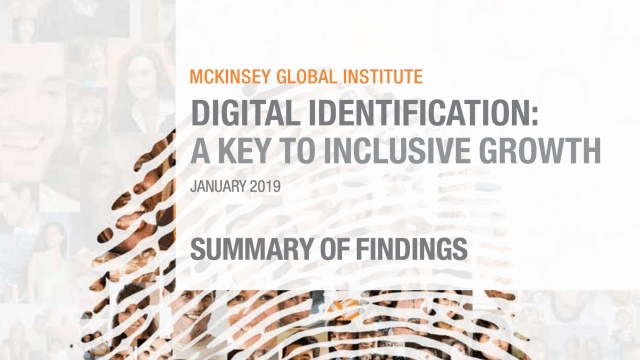In new research, the McKinsey Global Institute (MGI) develops a framework to understand the potential economic impact of digital ID, informed by an analysis of nearly 100 ways in which digital ID can be used, with deep dives into seven diverse economies. The potential for economic value creation could be significant as “good” digital ID increases inclusion, formalization, and transparency while promoting digitization, however risks need to be addressed.
In an era of rapid technological change, digital identification provides a significant opportunity for value creation for individuals and institutions.
Nearly one billion people globally lack a legally recognized form of identification, according to the World Bank ID4D database. The rest of the world’s 6.6 billion people either have some form of identification but limited access to services that increasingly are being provided online, or they are active online but struggle to keep track of their digital footprint securely and efficiently.
Individuals can use digital identification, or “digital ID,” to be verified unambiguously through a digital channel, unlocking access to banking, government benefits, education, and many other critical services.
Programs employing this relatively new technology have had mixed success to date—many have failed to attain even modest levels of usage, while a few have achieved large-scale implementation. Yet well-designed digital ID not only enables civic and social empowerment, but also makes possible real and inclusive economic gains—a less well understood aspect of the technology.
Omidyar Network is proud to have advised the project team and hopes this research contributes to a greater understanding of how good digital ID, designed with the right principles and enforced with the right policies, can create significant economic benefits for individuals and institutions and protect individuals from the risk of abuse.
View the full report and other insights at www.mckinsey.com/digitalid.

